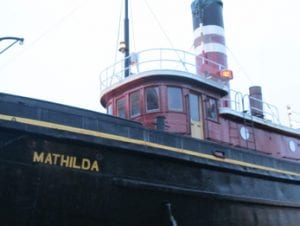Hudson River Maritime Museum
According to the Hudson River Maritime Museum’s official website, the museum was founded in 1980 to “collect, preserve, exhibit, and interpret a collection of historical artifacts related to the maritime heritage of the Hudson River and its tributaries.” The museum mostly covers the industrial history of the river and focuses on the working class people of the Hudson River Valley. Some of the industries that have evolved in the region have been brick and cement making, ice harvesting, and much more. Many of these industries were furthered or created by the invention of the steamboat, and the building of canals. The towns along the Hudson River Estuary and their economies have relied on the river for centuries. The people in this region, especially in Kingston where the museum is based, owe their livelihoods to the river. This is why such a museum is so important to have. The Hudson River Maritime Museum serves as a reminder of the rich history that the river provides, and continues to connect New Yorkers to the river.
The museum began in 1980, and it’s first artifact, the steamboat Mathilda, was donated to the museum a few years later. Interestingly, the Mathilda had never worked on the Hudson River. The steamboat is dry docked in the museum yard now and serves as an exciting way for guests to understand how a steamboat operates because she has a window on her hull looking into the engine room. The staff and volunteers one day hope to offer deck tours on this beautiful ship, but right now mold and asbestos stand in the way. The museum mostly relies on donations and volunteers, but that is more of a boon than a burden. Since the 80’s, the museum has expanded to having an east and west gallery filled with many amazing artifacts and stories. Guests at the museum can now expect to see ice boats, engine room bells, and some pianos initially used on the famous Dayline. The museum even offers a new exhibit each year, providing opportunities to see artifacts not featured in the museum’s permanent exhibits. This year’s exhibit is The Hudson River and Its Canals: Building the Empire State. This exhibit features the Erie Canal, the Delaware and Hudson Canal, and the Champlain canal. Guests can view videos on the canal, experience what cabin looked like on a barge, and even build a custom canal. This has become one of my favorite exhibits in the entire museum.
The artifacts and exhibits are only a small part of what the museum offers to the public, however. The staff at the museum offer tours, programs, and special events to connect with the river’s history. Many of the projects I worked on involved these education programs and events. The museum offers many different school tours created for specific ages and interests, and each has a fun activity. The education team also hosts a program for children called Museum Mates. This program takes place once a month, and centers around a specific aspect of the river’s history, often including snacks, activities, and a reading. My favorite program offered by HRMM is it’s Follow the River Lecture and Film Series. While working at the museum, I worked on editing the videos of these lectures. Every month a scholar or a member of the river’s community gives a lecture at the museum on a topic of their choice. Sometimes members of the museum’s staff make appearances as lecturers. Sarah Wassberg Johnson, the Director of Education, once gave a fascinating lecture on the women lighthouse keepers along the river. Information on upcoming lectures is located on the museum’s website, http://www.hrmm.org/lecture-series.html. I highly recommend going to at least one lecture at the museum, if you can.
Though the history of the Hudson River’s industry is often overlooked, HRMM is bringing it back to the community accurately and engagingly. HRMM is the Hudson Valley’s hidden gem. It has become a must-see for residents and tourists alike.
